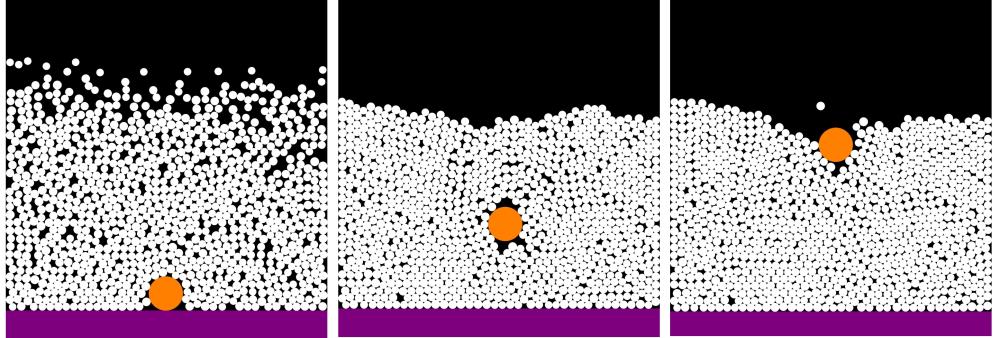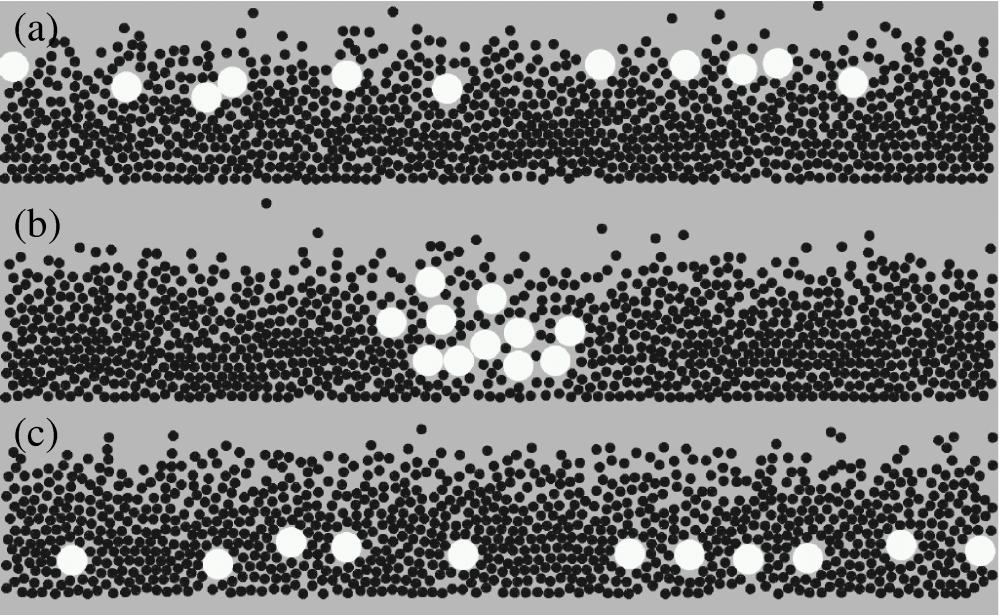
It is well known that, under vertical vibration,
a large heavy intruder will rise to the top of a fine granular bed. Other
types of intruder may move to the bottom of the bed under the same vibratory
conditions. We are investigating the conditions for these effects and the
influence of an ambient fluid on the behaviour. We are also investigating
the dynamics of multiple intruders which often exhibit strongly correlated
motion.
|

|
|
Simulations of the air-driven Brazil nut effect in two-dimensions.
|

|
Simulation of the behaviour of multiple intruders in a vertically vibrated granular bed. The top picture, (a), shows the behaviour for light intruders, while the bottom picture, (c), shows the behaviour of heavy intruders. If the intruders have al buoyancy, as in the middle picture, (c), clustering is observed.
|
| Shock waves are generated when the granular bed collides with the vibrating base. An intruder modifies the physical properties of its surrounding area. The video on the right shows the kinetic energy density of the host particle of a system with a single neutral buoyant intruder. Bright colour indicates higher K.E. density. The center of the frame of reference is fixed at the position of the intruder. From the video we can see the presence of the intruder causes a different effect to the surrounding at different time of the cycle. |

|
|
|
| This video shows the number density of the host particle. Bright colour indicates lower density. We can see the presence of the intruder lowers the number density of its surrounding area. |

|
|
|
| The density profile of a system with 2 neutrally buoyant intruders with a separation between 3 to 4 intruder diameters. The video shows the region between the intruders has a much lower density of host particle than the regions at the two sides of the two intruders, which leads to the clustering effect observed above. |

|
|
|
| If the value of the coefficient of restitution between the host particles and the intruder particle is lowered, the intruder would rise the number density of the surrounding instead of lowering it. As a result, the interaction between the intruders would change from attractive to repulsive. |

|
|
|